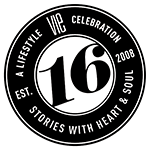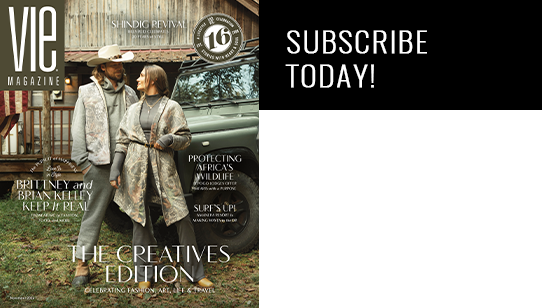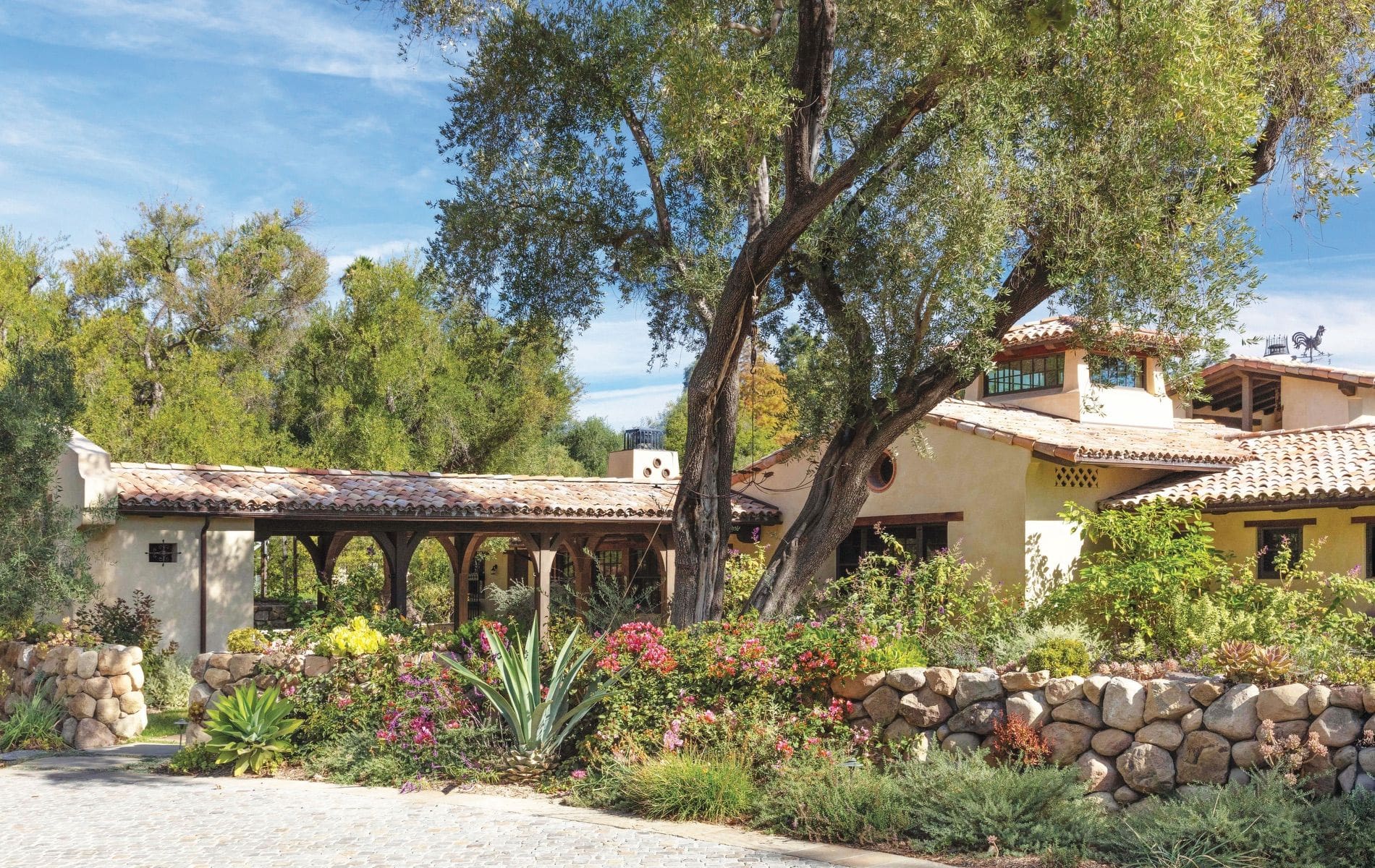
VIE_Magazine_FEB23_article_Spanish_Revival_HERO-min
The original adobe buildings on this property in Southern California were from the 1920s and ’30s and have been lovingly reimagined by Wade Weissmann Architecture and Simonds Design.
Spanish Revival
Breathing New Life into a California Farm
By Jordan Staggs | Photography by Holly Lepere
“I think there is a desire to unplug and be immersed in this environment, which is incredibly healing,” says architect Wade Weissmann, whose recent California Farm Retreat project is a beauty to behold. The collection of Spanish Revival-inspired residential and farm buildings and their surrounding four-hundred-acre property in the rolling hills of Southern California celebrate the organic yet dynamic feeling evoked by time spent admiring and connecting with nature.
Weissmann, the founder and principal of Wade Weissmann Architecture, boasts an impressive career of over twenty-five years designing “classically inspired estates” for clients around the world. This farm retreat is no exception to his classic style. It integrates a modern version of centuries-old Spanish Colonial elements, including the tiled roof, pigmented stucco exteriors, deep-set and punched windows, and stained wood accents. Weissmann worked closely with interior designers Tina Simonds of Simonds Design and Jordana Joseph of Jorje Design to ensure the layout, finishes, and furnishings would, as Weissmann says, “create shelter for the times that you couldn’t be outside but essentially allow for the outdoor spaces to be celebrated in and gathered in; it’s really kind of an inside-outside home.”
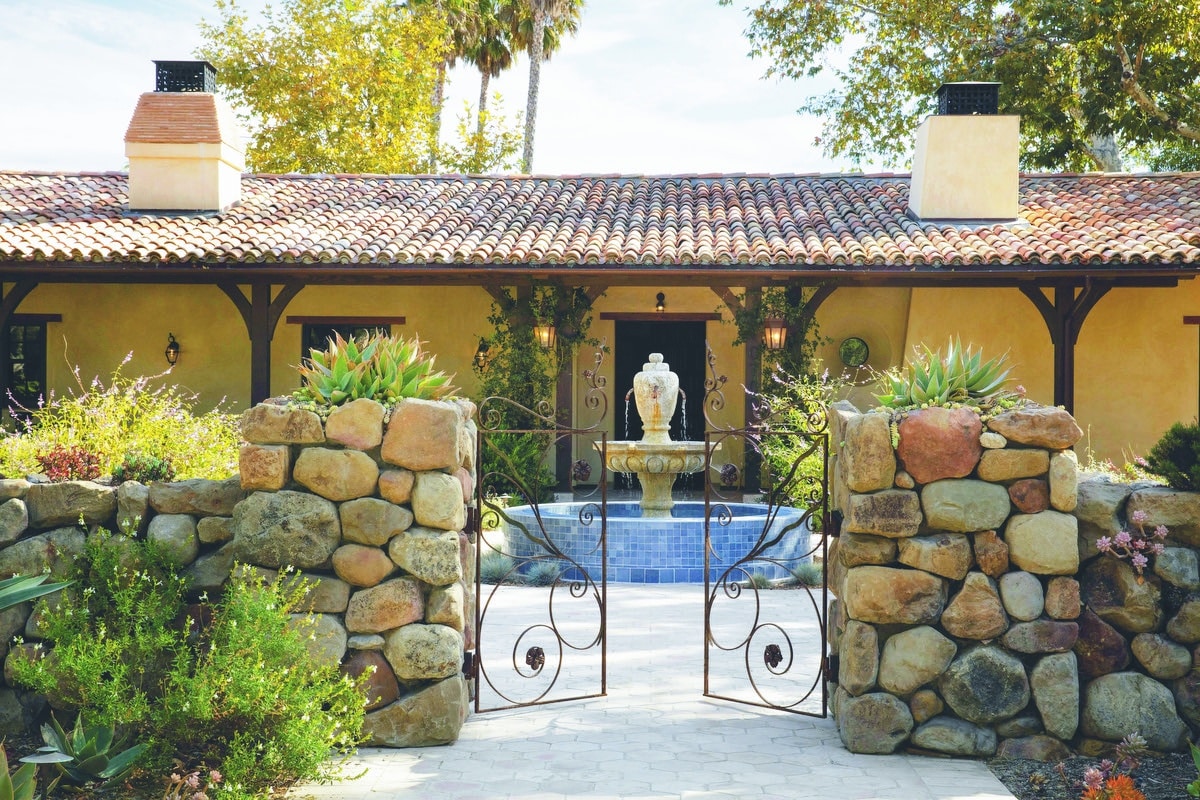
The original adobe buildings on this property in Southern California were from the 1920s and ’30s and have been lovingly reimagined by Wade Weissmann Architecture and Simonds Design.
Both Weissmann and Simonds grew up inspired by farmland and spending time in nature. Weissmann grew up visiting his parents’ hobby farm in Door County, Wisconsin, on weekends and during the summer. “It was a really great playground for a kid to explore and to always be building things,” he reminisces. “If I was in the hayloft and it was a rainy day, I would build forts out of hay bales. If it was in the middle of the summer and beautiful outside, I gathered sticks and wood to build forts in the forest. On really cold winter days, I was downstairs using chunks of furniture and sofa cushions to build little forts and things inside. I was keenly aware of space and environments even as a young kid.”
Simonds grew up in a large family on a farm in rural Indiana. She recalls, “This meant my time was spent helping out with farm work, but I would find myself focused on the natural patterns that surrounded me: stacking straw bales into layouts like tiles, watching bees building hexagonal hives, imagining creating decorative elements out of the farm junkyard. Without realizing it, I spent my childhood looking for designs in everything. Now I look to this in my current work by reclaiming material from old farms and turning junk into sophisticated details for my projects.”
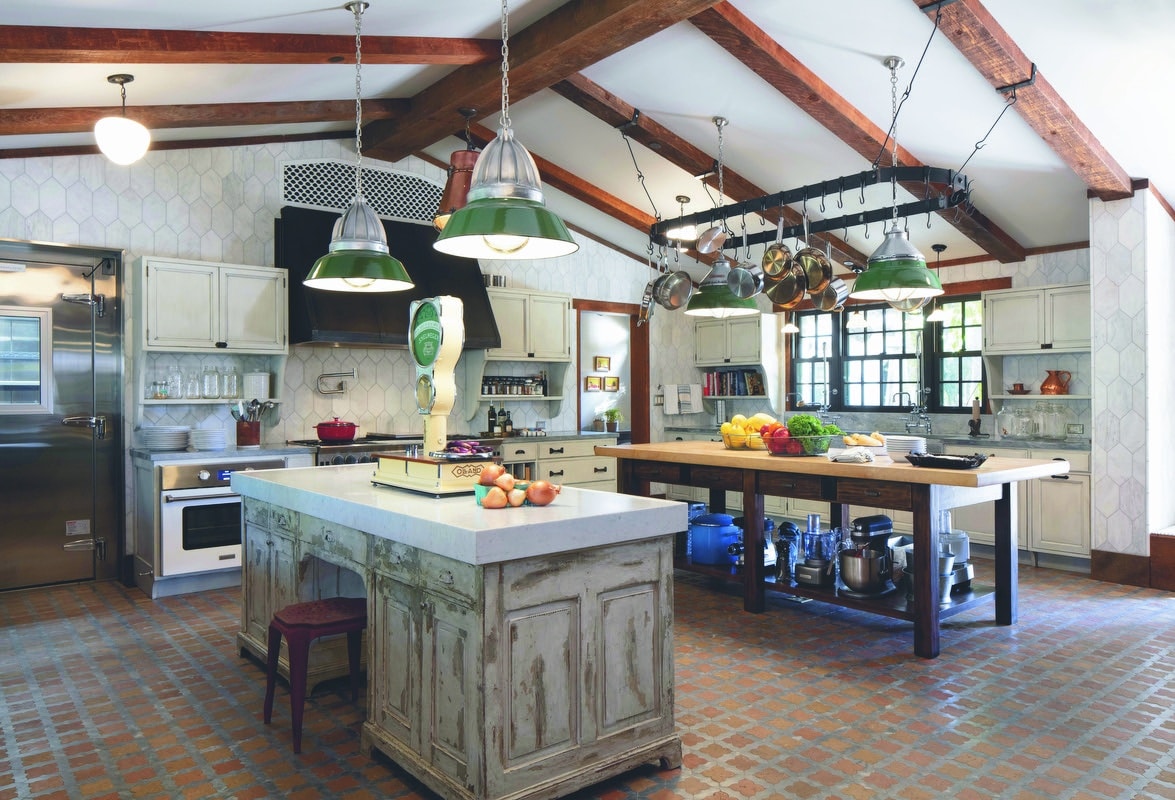
Tina Simonds, Jordana Joseph, and their interior design teams sourced about 95 percent of the retreat’s lighting, hardware, sinks, and accessories from vintage and antique markets.
This farm retreat is no exception to his classic style. It integrates a modern version of centuries-old Spanish Colonial elements, including the tiled roof, pigmented stucco exteriors, deep-set and punched windows, and stained wood accents.
Having worked together before, the teams at WWA and Simonds Design had a great rapport for collaborating throughout the entire process of creating this multifaceted farm retreat. Challenges included making sure it was not only a beautiful home but also a functional, practical working farm.
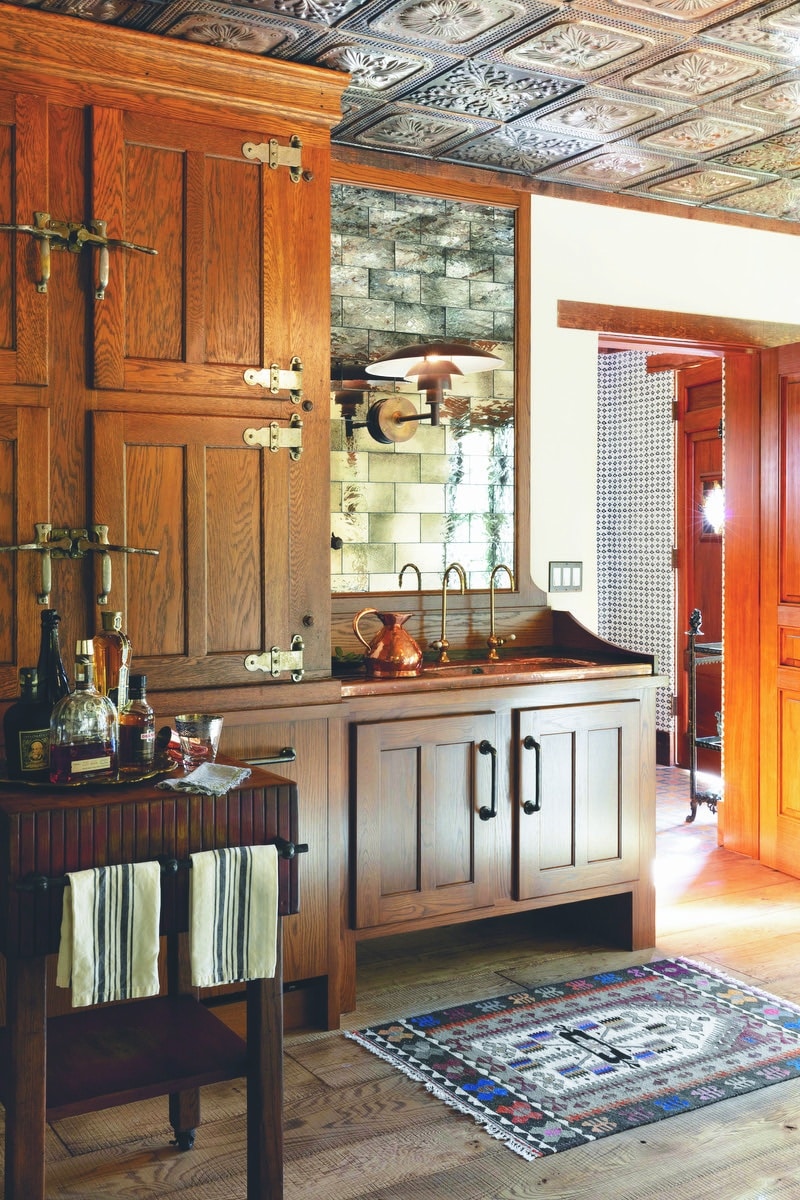
Rich details, including tile ceilings and dark wood cabinetry, celebrate the farm’s Spanish architectural heritage.
“The focus of the farm itself is to promote healthful living, and we really wanted that reflected in the design and function of the home,” Simonds shares. “Almost all the finishes are natural, old, and very used, which exudes warmth in its knowledge. We provided space for a test kitchen, a main kitchen, and a large outdoor dining area to encourage all guests to take part in eating straight from the gardens and gathering to share meals and the day’s events. We want to allow the homeowners and any guests to feel connected through the shared social spaces, inside and out.”
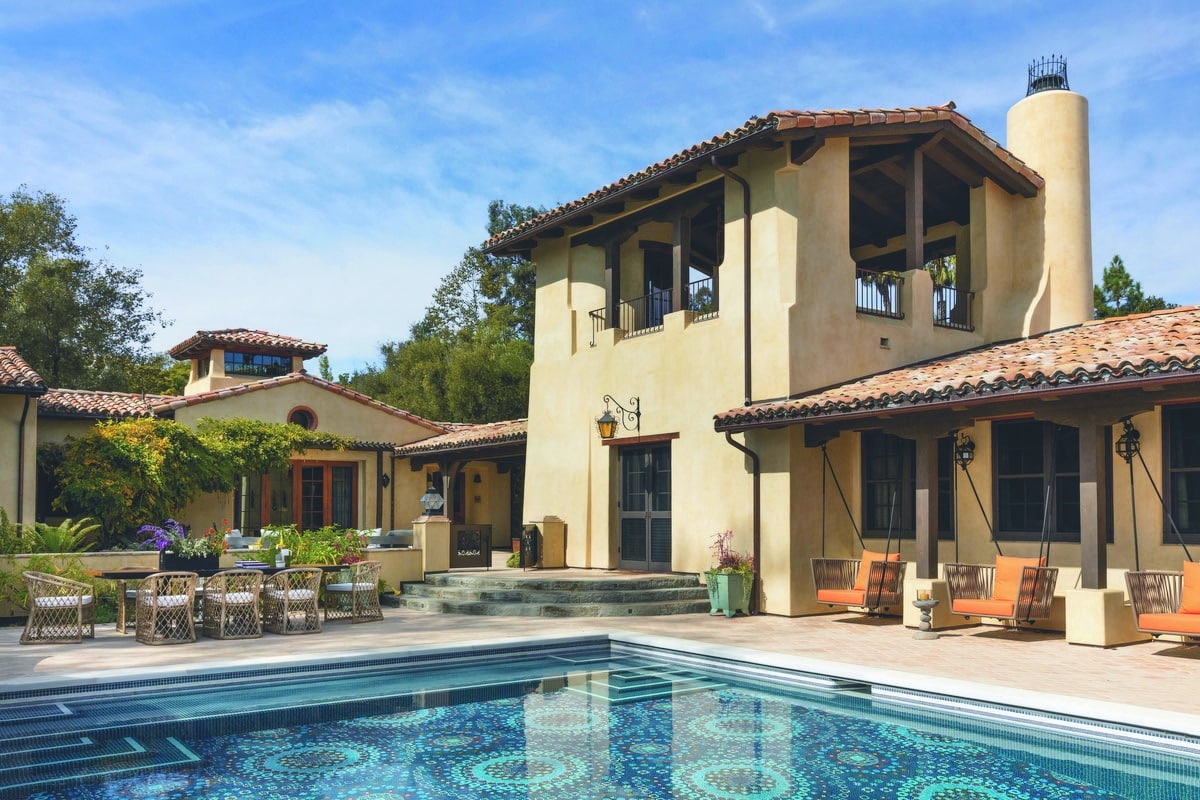
Great weather and the farming tradition of gathering at the end of each workday for a big meal encouraged Weissmann and Simonds to ensure the property’s outdoor living spaces became places to relax, celebrate, eat, and engage in conversation.
Weissmann adds, “Sharing in the resolution of the design gave Tina and her team the ability to look for found and reclaimed objects that could be utilized in the varying spaces. When they were ‘hunting’ and would find things, we could accommodate them right there and then in the plans. They would go to various salvage yards and antique centers and find interesting components, such as an old trough sink or a chunk of an old industrial worktable, and those items were shown to us so we could accurately place them and set up the structure in order to accommodate them. It was great to be fed these artifacts found on their travels and integrate them into the design.”
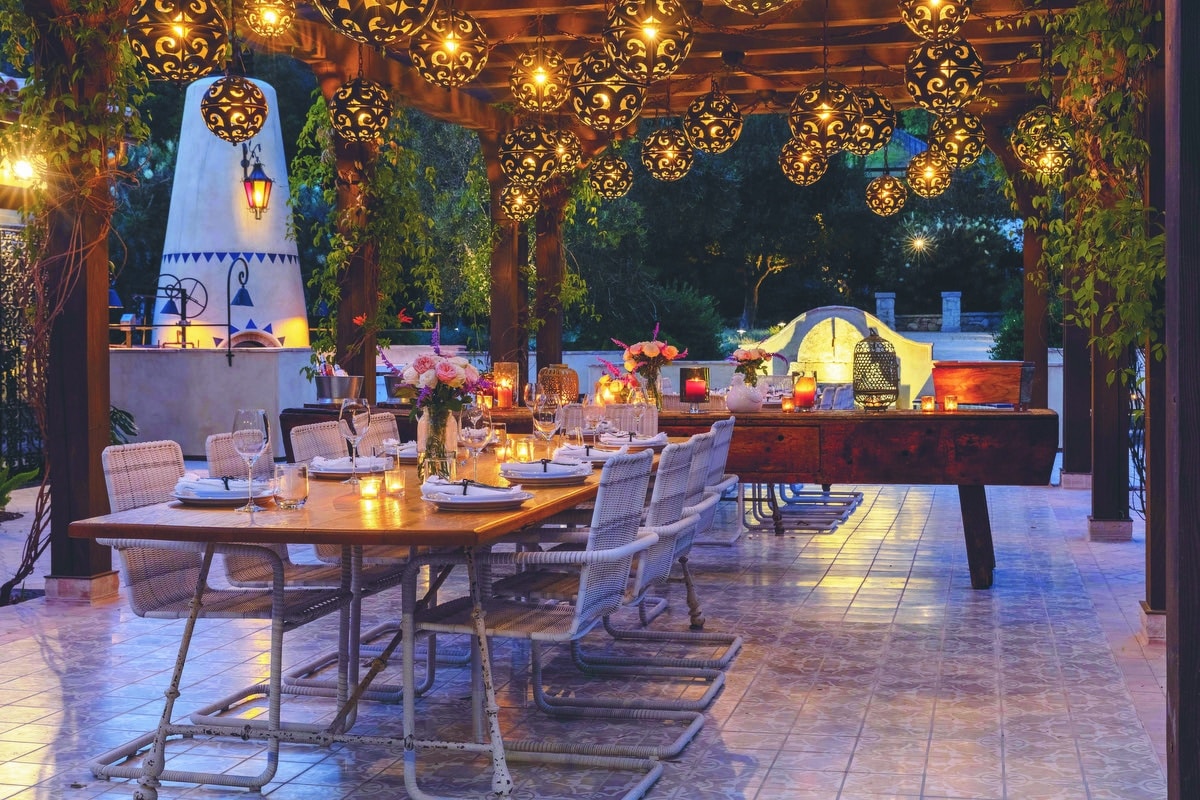
Working with antiques and reclaimed objects, which Simonds says make up about 95 percent of the retreat’s light fixtures, hardware, sinks, and furnishings, can be a challenge when it comes to functionality. The team had to be sure the objects would look great and be usable for the farm’s owners and guests. “The only way this effort is successful is by working with amazingly patient trade partners,” Simonds says. “I love the feeling when all of the parts of a design racing around in my brain become real. This project gave me pause and also made me jump, spin, skip, cartwheel, clap, screech, and laugh my head off! It was incredible.”
She continues, “I was fortunate to collaborate with the extraordinary Jordana Joseph of Jorje Interiors—she became the yin to my yang. I also want to warmly thank Johnny, the fine-trim carpenter, for spending days and days with me, installing and hanging the enormous assortments of accessories. Without these, I would’ve lost many layers of personality in these spaces.” Arcadia Studio was responsible for the landscape architecture, while All Coast Construction was the builder for the project.
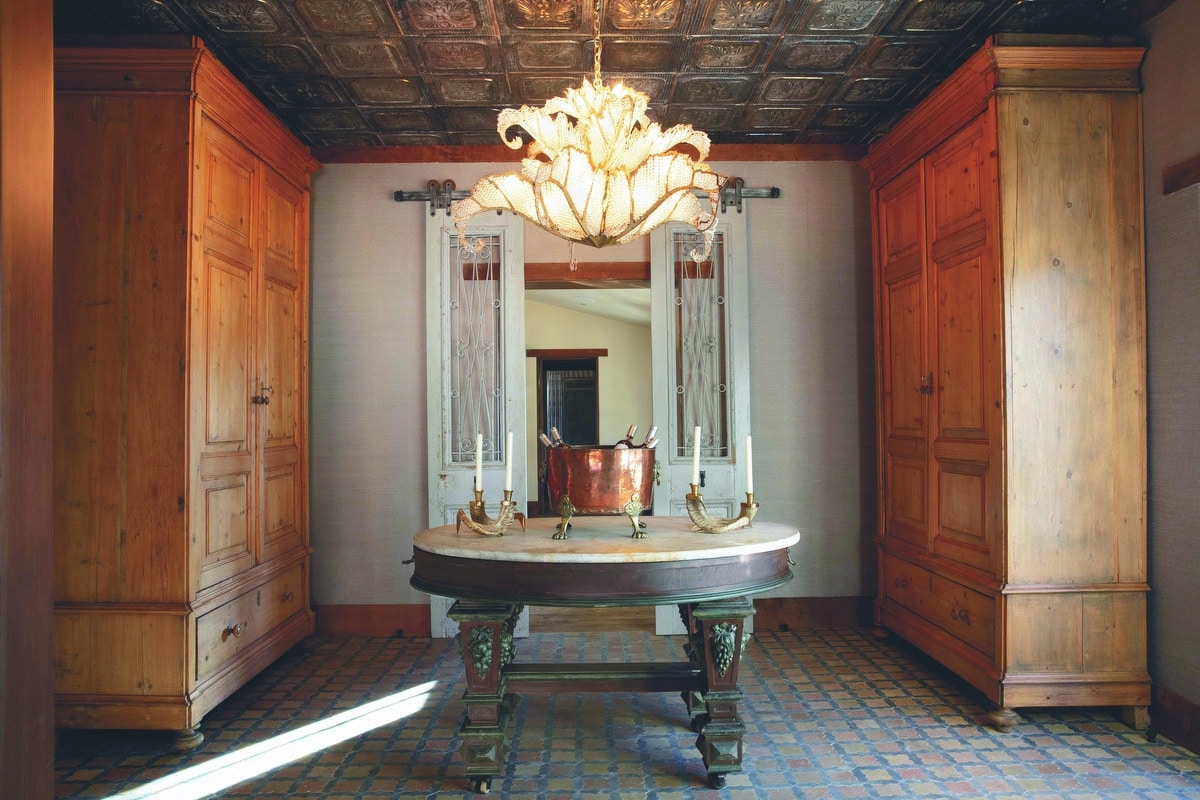
“The romance that we celebrated in that hacienda-style architecture was something that my colleagues and I found very intriguing,” Weissmann adds. “I believe the original adobe residence on the property was built in the 1920s or 1930s. It had a cooking hearth, long, low-slung overhangs, and shallow-pitched roofs. A lot of stone, stucco, tile, and reclaimed tile was found on the property. The plasticity of this adobe-like material allowed us to create exterior spaces around these buildings that could house programs to service those outdoor spaces, so there was an opportunity to put functions in various components of the buildings that could serve as the outdoor living space.”
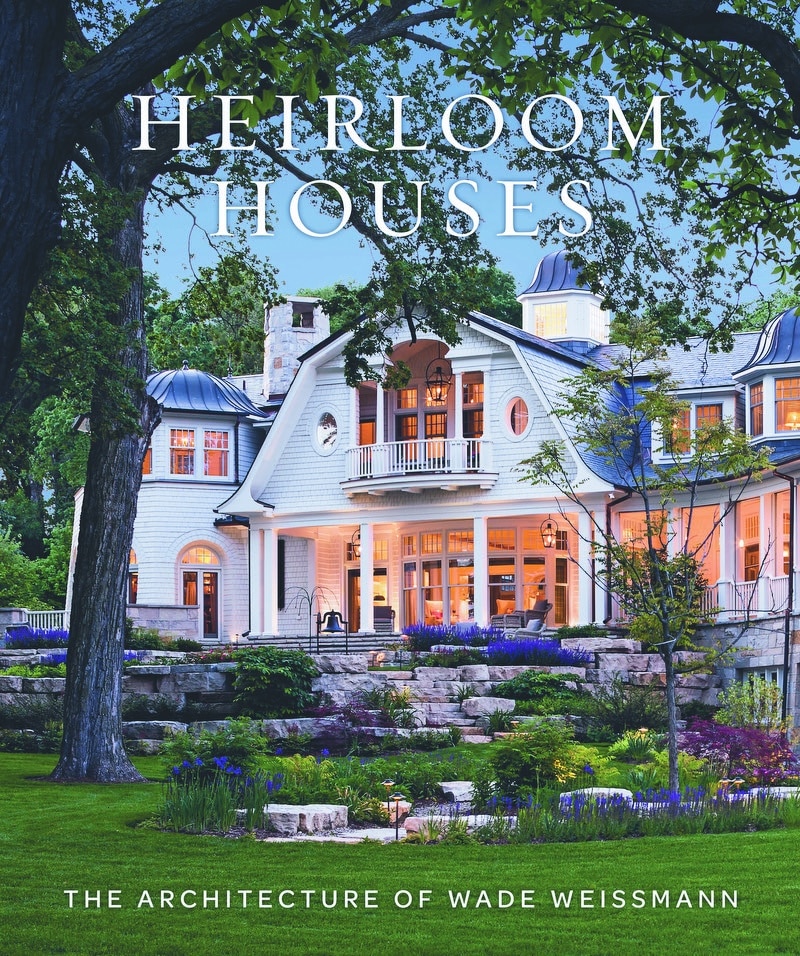
The romance that we celebrated in that hacienda-style architecture was something that my colleagues and I found very intriguing.
He continues, “Celebrating the property’s historic architecture and the charming indoor-outdoor lifestyle it embraced, especially because that’s a big part of the architectural flavor of the local community, seemed very appropriate. We were humbled to maintain the precedent set by the original vernacular and life of this farm.”
Readers can find more of Weissmann’s work in his first monograph, Heirloom Houses: The Architecture of Wade Weissmann. The coffee-table book features fifteen beautifully crafted WWA legacy homes that, like the California Farm Retreat, are designed to stand the test of time and be passed to future generations.
— V —

Visit WadeWeissmannArchitecture.com to learn more or see more projects. Heirloom Houses: The Architecture of Wade Weissmann is available for purchase from Amazon and other major booksellers.
Share This Story!
KEEP UP WITH THE LATEST STORIES FROM VIE
